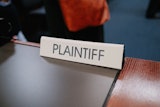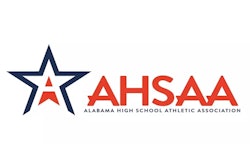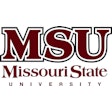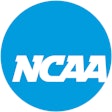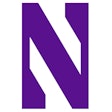
While typically receiving little publicity, one position that comes with built-in conflicts of interest is that of team doctor, because team doctors have two bosses.
While a personal physician has only one duty — to provide patients with the best care possible — team doctors working for a college athletic department or professional sports franchise serve two clients, and those clients often have conflicting needs. On the one hand, like all medical personnel, the team doctor has a duty to treat an injured patient. On the other, team doctors are employees of the college or professional team, and thus are paid to help ensure that players are available to take the field or court as quickly and frequently as possible.
A good illustration of the conflict that can occur when a team doctor and university disagree on whether athletes are healthy enough to return to play is Scott Lynch v. Penn State’s Milton S. Hershey Medical Center and Dr. Kevin Black, Civ. No. 2019-cv-6337.
Franklin effect?
Dr. Scott Lynch was employed by the Penn State Milton S. Hershey Medical Center and directly supervised by Dr. Kevin Black. As part of his job, Lynch served as director of athletic medicine for Penn State University and as orthopedic doctor for the Nittany Lions football team. After repeated clashes with head coach James Franklin concerning the treatment of players and return-to-play decisions, Lynch reported Franklin to the Penn State athletic department and Penn State Health for interfering with the autonomy of the medical staff.
Soon after reporting Franklin, Lynch was relieved of his dual roles.
After being terminated, Lynch wrote an email to Penn State integrity officer Bob Boland stating that his termination was due in part to Franklin’s influence on athletic director Sandy Barbour. Lynch also made several recommendations to Black, his supervisor, to improve the autonomy of the sports medicine staff and improve the athletic training staff’s handling of injuries, medical treatment and decisions regarding athletes' return to play. Black did not implement the policies.
Lynch next filed a lawsuit against the Hershey Medical Center and Black for retaliatory adverse employment consequence that violated public policy. The Medical Center and Black claimed that the reason Lynch was removed from his positions had nothing to do with Lynch’s contentious relationship with Franklin. They claimed it was simply because Lynch lived in Hershey, 100 miles away from State College, and the university wanted someone who lived closer to campus.
Lynch also sued Penn State University and Franklin for violation of the Pennsylvania Whistleblower Act.
The court, however, dismissed all those claims because of filing errors. As a result, the only question for the jury was whether the Medical Center and Black violated public policy when they removed Lynch from his job with the football team.
Following a seven-day jury trial, the jury awarded Lynch $250,000 in compensatory or economic damages and $5 million in punitive damages.
 James Franklin
James Franklin
Penn State and public policy
On appeal, the Medical Center and Black claimed that they were entitled to judgment notwithstanding the verdict because there was no evidence to support the claim that Lynch ever altered any of his medical treatment of players under pressure from Franklin or any other coach. While Lynch may not have altered his treatment, the jury did find enough evidence to suggest that Lynch was terminated from his positions because he would not allow non-medical persons, including Franklin, to interfere with his medical and return-to-play decisions related to the health, safety and welfare of PSU athletes.
The jury also found evidence to support the conclusion that the motive behind the termination of Lynch was monetary in nature. In particular, the jury found that the Medical Center and Black prioritized protecting their relationship with the Penn State football team and Franklin over the health, safety and welfare of PSU football players, and also Lynch’s employment rights.
The Medical Center and Black also claimed that under state law, absent a statutory or contractual provision to the contrary, Pennsylvania was an “employment at will” state. Employment at will means that either party may terminate an employment relationship for any or no reason. In the current case, the Medical Center and Black argued that they terminated Lynch’s employment because he did not live in State College and was never available full-time. Therefore, they argued that they had every right to terminate Lynch’s employment.
In rejecting this argument, the court held that even with an employment at will, an employee may bring a claim for unlawful termination in limited circumstances, such as where the termination violates public policy. Therefore, the court held that if Lynch could show that his termination threatened public policy, he may have a claim against his employer for wrongful discharge.
To show that his termination violated public policy, the court ruled that Lynch had to establish that the termination fell into one of three categories: An employer cannot 1) require an employee to commit a crime, 2) prevent an employee from complying with a statutorily imposed duty, 3) discharge an employee when specifically prohibited from doing so by statute.
In ruling in favor of Lynch, the court found that — under Pennsylvania law — Lynch had an affirmative statutory duty to ensure the safety of athletes under his care. This included the affirmative duty to make medical decisions on behalf of the athletes, free of any undue influence from non-medical professionals, such as football coaches. Therefore, the court ruled that it was a violation of public policy to interfere with Lynch’s medical decisions. The court also found that it would violate public policy to not allow him to pursue his lawsuit for wrongful discharge based on his compliance with his duties of ensuring the safety of others.
Reckless indifference
In challenging the punitive damage award, the Medical Center and Black argued that the trial court should have either vacated the award or reduced it because there was no evidence to show that the Medical Center and Black acted willfully or with reckless indifference. Punitive damages, they argued, are only awarded if the jury finds that the conduct complained of was malicious, willful, wanton or oppressive, or showed reckless indifference to the interest of others.
In ruling that the jury’s award of punitive damages was reasonable, the court concluded that there was enough evidence for the jury to find that Lynch was terminated because he would not allow Franklin to interfere with his medical and return-to-play decisions. In addition, as noted above, the jury concluded that the motive behind Lynch’s termination was monetarily related and could support the conclusion that the Medical Center and Black acted willfully and with reckless indifference toward the health, safety and welfare of the football players under Lynch’s care and Lynch’s employment rights.
As for whether the $5 million in punitive damages was excessive, the court ruled that there was no bright-line test to make that determination. Instead, the court held that all that was needed was a reasonable relationship between the harm that was likely to occur from the conduct to the harm that did occur. Based on the facts of this case, the court believed that there was a reasonable relationship between the punitive damages and the harm that was likely to and did occur.
Influence in other forms
While clearly an expensive lesson for Penn State and the Medical Center, Lynch v. Penn State’s Milton S. Hershey Medical Center and Dr. Kevin Black should provide some valuable lessons to other colleges and professional sports teams.
First, as the court held, team doctors have an affirmative duty to ensure the safety of the athletes under their care. Included in this is the duty to make medical decisions on behalf of the athletes, free of any undue influence from non-medical professionals, such as coaches. Therefore, while college and professional teams may feel the need to return a certain player to the field or court, they need to ensure that coaches and other non-medical professionals do not interfere with the team doctor’s medical or return-to-play decisions. If they do, they risk being found liable for any damages — not only those that occur but are likely to occur.
Second, there was some discussion about the influence Penn State apparel partner Nike may have played in the treatment of athletes. In particular, the court heard from witnesses that Nike at one point voiced opposition to the athletic staff’s practice of “spatting” — wrapping athletes’ ankles in tape for support. According to a clause in Penn State’s Nike deal, spatting was prohibited because it would cover the Nike logo on players’ shoes. The clause thus inhibited the ability of training staff to treat player injuries.
Witnesses claimed that Nike told trainers that Penn State players should not be spatted, and Franklin did likewise. While not an issue in the case, it is important to note that when schools and professional teams enter into sponsorship agreements, those agreements do not allow the sponsors to interfere with the ability of training staff to treat athletes in the manner they see fit to prevent player injuries.













